In the opening scenes of Gary Ross’s 1998 film Pleasantville, the camera moves from classroom to classroom in a typical high school. In every room a teacher is telling the official story of the future to those who will have to inhabit it. It’s the usual catechism of facts and statistics; just one damned thing after another. There will be climate change; there will be no jobs; there will be famines; there will be no water; you’re probably going to be poor and die young. We are meant to understand why the movie’s protagonist spends all his free time watching episodes of an old Leave It To Beaver—type television show called Pleasantville, where none of this is true, and where, thanks to a magical remote control that sucks them into the TV, he and his sister end up living. In Pleasantville, the forecast on the radio is always the same (“70 degrees and sunny!”). Everything is perfect, so nothing ever changes. Predictably, this turns out to be the problem, and it becomes our hero’s duty to bring some color to their black-and-white world.
I used to be the kind of teacher who tried to terrify Pleasantville’s protagonist. I was always looking for something scary and depressing that might wake my students up from their dogmatic slumbers. But I believe in words, not numbers; I believe it’s not data but beauty that will save the world. So I didn’t want facts and statistics. I wanted living color, an axe to break the frozen sea. That’s what led to my first encounter with the work of Paul Kingsnorth, when a few years back I came across his 2009 Dark Mountain Manifesto. It was a very sharp axe. I put it at the top of my syllabus.
It did not land, as I recall. The 20-page document (my first mistake) starts with a poem by Robinson Jeffers, who says he would “burn my hand in a slow fire / to change the future,” but that he would be a fool to do it. There’s another Jeffers poem at the beginning of the next section (“Then what is the answer? / Not to be deluded by dreams”), and throughout the text Kingsnorth and his co-author Dougald Hine mention or quote Emerson, Conrad, Russell, Marx, Hume, Thatcher, Lenin, Larkin, Wordsworth, and others. None of my students have heard of any of those people. Kingsnorth and Hine ask their readers to “think of Wendell Berry or W.S. Merwin, Mary Oliver or Cormac McCarthy,” but of course the poor kids aren’t readers. They can’t really think much about anything like that.
I wanted beautiful words that would hit them where it hurts. What I didn’t appreciate is that my students had been getting bludgeoned to death for most of their lives. If words, even at their best, don’t work on them, it’s not because they’re illiterate, though they are. They’re illiterate in part because they’re drowning in words, and a lot of them are alarm-bell words that are always trying to “wake them up,” even if it’s just so they’ll buy something. I give them something truly beautiful, something rich, something much better than facts—I give them Kingsnorth!—and still all they can hear is the ping-ping-ping of that same broken bell. They’re old hands at this game, and they can sleep through the alarm without a thought.
But there’s a simpler explanation for why the manifesto didn’t work on my students, which is just that it wasn’t meant to. It’s an artist’s manifesto. It’s explicitly addressed to serious writers, not to undergrads of a professor’s stereotype. Paul Kingnorth has always been a writer deeply concerned with a question that only writers (and by implication readers) really care about, which is whether writing and reading are really worth doing in a world so “deluded by dreams” that it’s literally burning up in a slow fire. His 2019 book Savage Gods meditates at length on exactly this question. “What if I just shut up?,” he asks himself, 31 pages in. He goes on for another 95 pages, as a writer must. But after that book, Kingsnorth actually did it. He swore off writing for a year. When he started again, in the first essay for his now-indispensable Substack, The Abbey of Misrule, he talked about what happened. “I had stopped believing in words. They had come to seem less like a liberation, and more like a trap; less like a glass I could see through, if darkly, and more like a wall which prevented me from touching the real world on the other side.”
Yet the writer’s question is not just the writer’s question. While a writer’s manifesto may not appeal to a bunch of screen-addled freshmen, even the most jaded among them have at some point felt the dark mountain sitting uncomfortably on their shoulders. The writer wonders whether words can ever really wake us up, or whether they simply keep us dreaming that we’re awake. Is there a way to write that moves the reader beyond the text, or is there in fact nothing outside the text, as Derrida declared? But this is what everybody wonders, one way or another—whether any of it means anything at all, or whether it all refers back to itself. The writer’s question turns out to be the human question in professional disguise.
You have to really believe in words if you’re going to take on Kingsnorth’s 2013 novel, The Wake, which is the first installment of his Buckmaster Trilogy. The first sentence is “see i had cnawan yfel was cuman when i seen this fugol glidan offer,” and it’s like that for 344 pages. This is Kingsnorth’s version of Old English—not actual Old English, but “a pseudo-language intended to convey the feeling of the old language by combining some of its vocabulary and syntax with the English we speak today.” The reader has to learn this “shadow tongue” as he goes. It took me about twenty pages before I got the hang of it. The fact that it was more than worth the work is a testament to Kingsnorth’s talent. I don’t know who else could pull it off without producing something affected or gimmicky. The Wake is anything but.
Translated, that first sentence reads “I knew evil was coming when I saw this bird gliding over.” The evil is the Norman invasion, and the speaker, a yeoman named Buccmaster who is displaced by the invaders, will be corrupted by his sorrow and rage. Led by evil words—he starts hearing the voice of a god—he becomes evil in his turn and turns to violence in his desperate search for a “RETVRN” to the way things were.
Before Kingsnorth betrayed them with his conversion to Orthodox Christianity and his embrace of Covid heterodoxy, well-heeled critics feted The Wake not just because it is a powerful book but because they could read it as a prescient rebuke to their cultural enemies. “[It] has since gained a disturbing resonance with the recent surge and codification of nationalism that is Brexit,” wrote one. Now that Kingsnorth has stumbled onto the wrong side of history (“Kingsnorth’s story is a study in how someone squarely on the Left can slip into proto-fascism”), and has been caught giving lectures for First Things (not to mention Front Porch Republic), bien-pensant types are keen to explore “Nature Writing’s Fascist Roots,” no doubt in part to deflect the obvious counterargument that if there is any such thing as “ecofascism,” it’s more likely to be found in the progressive technofantasies that George Monbiot spins for The Guardian. Kingsnorth himself has made that argument, writing for Unherd that “Ecofascism is Our Future.”
And yet The Wake really is a warning about the terrible danger of seeking a RETRVN to Pleasantville. It matters that this is the opening statement of a trilogy that ends by depicting the alternate danger of Monbiotish futurism, which in the far future world of the third novel has led to a literal if unconventional hell. Kingsnorth is alert, from the very beginning, to the risk of staring into the abyss, which is that the abyss stares back. That’s what happens to Buccmaster, as he becomes possessed by the spirit of a god that promises to restore his sense of control over the world, but at the expense of his soul.
In The Wake, a man of a thousand years ago fights the establishment of a new civilization, and pays the spiritual cost. In Beast, the second and strangest book in the trilogy, a man of our own time flees an established civilization for the woods. He too pays a spiritual cost. Fight or flight there is always a price. Beast is like a J.G. Ballard novel, in which someone is always inexplicably moving closer, alone, to the heart of the threat, while everybody else is running away from it. The modern Edward Buckmaster, escaped from civilization, is trying to get closer to “nature,” which is of course the threat that civilization allows us to escape. He is hunting—and is being hunted by—a shadowy, cat-like creature, which may or may not be a fever dream. The cost of his quest is language itself. At the beginning of the book, sentences are complete, there are capital letters and punctuation; by the end, sentences run on and on, without meaningful breaks, and the book concludes without a period, in the middle of a word. One imagines “modernity” ending in much the same way.
When there is nothing outside the text, then there is nothing in the text, and those who live inside it are unraveled by it. They are turned inside out, made into nothing, annihilated. Buccmaster in The Wake mistakes his own vengeful desires for the word of a god and turns to violence. His is an aggressive nothingness, a pagan sound and fury, full of meaningful gestures, empty of meaning. Buckmaster in Beast comes from a world—ours—where people have become so wary of defending their culture and convictions, so alert to the risk of violence that attends it (“fascism”), that they have killed the old gods. But the result is the same: they worship their own desires and take holy vengeance on anybody who stands in their way, even if the vengeance is less sanguine than the “blood eagle” of Buccmaster’s fantasy. The modern Buckmaster flees the passive-aggressive nothingness of the iron cage, the bureaucracies and advertisers that keep everybody socially distant so that nobody gets hurt like they did in the bad old days when people believed in things outside themselves. He’s running from the HR department, not the Normans. But he too seems to become what he fights, or in this case flees—a man without a true word, and so finally with no words at all. Seeking escape, he can only run deeper into the modern condition. He never catches the beast; the beast never catches him. “Meaning” escapes mid-sentence, stuck forever in quotation marks.
Kingsnorth was baptised a year after the 2020 release of Alexandria, the trilogy’s final novel. It is a Christian story through and through. A thousand years into the future, most people have fled from a human condition that now includes suffering in the heat of a fully-cooked planet, opting to upload their consciousness into a machine—a sort of global AI that promises eternal bliss. A few persist, keeping faith with the bodies that are given to them, living in a small community that hopes for the end of the infernal Machine (known by the same name as Buccmaster’s pagan god). This remnant must deal with the Machine’s agents, which are sent out to tempt them with serpentine words—they are never so primitive as to force anybody—to join the rest of humanity in silicon heaven, where they shall be as gods. The faithful few believe that this heaven is in fact hell, that the fruit is poison, that Pleasantville won’t be very pleasant, that black-and-white consciousness without the living color of a physical body is a kind of eternally experienced nothingness. They believe it, but they can’t know it. Meanwhile, what they know without a doubt is that they are suffering now, that even their good desires are thwarted at every turn by material circumstances that the Machine could remove, that they must toil and sweat and die in the suffocating embrace of nature when—perhaps—they could be free of all that, free to pursue any desire without suffering or inflicting any consequences, if they would only accept the Machine’s offer, which its red-robed messengers make with all the moral clarity and implacable logic of Dostoevsky’s Grand Inquisitor.
I have sometimes wondered what role writing the Buckmaster novels might have played in the author’s conversion. The trilogy begins in a pagan world of old gods that is being Christianized, moves through our own post-Christian and supposedly god-free age, and ends with an image of hope that is unmistakably Christian, though superficially pagan. Kingsnorth was an atheist, a Buddhist, and Wiccan before becoming Orthodox; maybe he was working it out in part by writing this story. This is a man who’s changed his mind more than once. He’s believed in different stories and been swayed by different words, as many of us have. Now he’s landed in a story that makes demanding claims about what is definitely “outside the text” but is also the Word that was there in the beginning. An interesting conclusion, especially since despite changing his mind several times about what he is for, Kingsnorth has known from the beginning what he’s against. And that is this thing called the Machine.
“Sometimes,” Kingsnorth admits, “I feel like I’ve been writing about this thing all my life.” Sometimes it feels like I’ve been reading Kingsnorth all my life. No doubt that’s because I’ve spent so much of my life reading others who also write about and against the “Machine” in one way or another. Many of these others are also Kingsnorth’s influences and interlocutors, and that’s probably why his new book, Against the Machine, feels so familiar. This is not a criticism. He is the first to admit that the book’s virtue is not that it makes an original contribution to anti-Machine literature but that it gathers together so many threads, threads that he’s been pulling at his whole life, the same threads that I and many of his likely readers will also have been pulling at. In Kingsnorth’s hands the work of gathering bears fruit. And yet the central question—that writer’s question which is also the human question—still haunts it. Does it do any good to keep talking about it? What can a word really do against the Machine? As he says: “It could be that even writing books about it is a trap.”
There are various ways to explain what the Machine is, but one way is to start with that fact. If writing books about it is a trap, it’s because the Machine is the sort of thing—though crucially it is not an actual thing—that assimilates resistance. The Machine is a judo artist who uses an opponent’s own energy against him. It thrives on attention, and negative is as good as positive, maybe even better. The Machine is Lululemon selling pricey work-out shirts emblazoned with anti-capitalist slogans to aspiring young socialists. The Machine is people standing patiently in line to see the fourth Matrix movie, vaccine passports in hand. The Machine is people buying Against the Machine on Amazon. The Machine is a website dedicated to local life.
The question then—perennially—is how to fight the beast without feeding it your hand. But again, it’s not an actual beast, just as it’s not an actual thing, and of course it’s not literally a machine. These are metaphors. Kingsnorth’s Machine is, rather, a story. It’s as a story that it assimilates resistance and makes profitable use of its critics. How do you fight a story without becoming a character inside it? How do you tell a counterstory that isn’t just another part of its plot? How do you get outside of its text, when every text has now been “modeled” and fed into an algorithm that spits out the truths you want to hear? If you don’t want to read Against the Machine, ChatGPT will give you a bullet-point summary of Kingsnorth’s entire oeuvre, complete with a nice visual chart showing his themes and their development to this point. Go ahead. Try it.
The strength of Against the Machine is Kingsnorth’s ability to chart the Machine story, which is, of course, not “just a story,” but a catechesis.
The strength of Against the Machine is Kingsnorth’s ability to chart the Machine story, which is, of course, not “just a story,” but a catechesis. The Machine teaches that suffering is bad because it is meaningless and must be eliminated; that frustrated desire is suffering; that technology is good because it eliminates suffering by satisfying desire; and that we are therefore obliged to accept any tool or system or literal machine that delivers “progress” and “the relief of man’s estate.” The Machine teaches that things can and therefore must be Pleasant. “We prefer to do things comfortably,” says Mustafa Mond at the end of Brave New World.
This is the story told to the faithful remnant in Alexandria. And, despite the long history of this story’s development, a history that has Kingsnorth writing about things like the enclosure movement and the Industrial Revolution and the birth of modern science and the rise of AI, it is really the same story that was there at the beginning of everything, which is why Kingsnorth opens the book by retelling the first chapters of Genesis. The Machine story has been getting repeated by some people to other people—though perhaps there are other powers and principalities involved—ever since that moment in the Garden when the center stopped holding and things fell apart.
But as much as the book is about a primal and perennial temptation, it is also an account of what’s happening now. The Machine story has been there from the beginning, but only in our own latter days do we see the emergence of something that we might call the Machine in its full form—a global system of total control, enabled by literal if largely digital machines of rapidly increasing power, built and embraced by people who have been so deeply formed by the Machine story and so impressed by the success of the technologies it’s inspired that they are barely capable of wanting to resist, let alone actually doing so. Our time is one in which everybody has seen all the movies, and maybe even read some of the books, that warn us about what’s coming, and it never seems to make a difference. We can watch The Matrix as many times as we want; it’s not going to dislodge the Machine story from our minds (indeed, it might be the Machine story), or motivate us to actually say “no” to the latest labor-saving device.
Only creatures can draw lines. Machines just get with the program.
The writer’s question and the human question take on new urgency in the face of what those devices are now making possible—the complete withdrawal from a reality that draws us out, into a text that curves us in on ourselves (in Augustine’s great phrase). “It is easy for me to imagine,” says Wendell Berry, “that the next great division of the world will be between people who wish to live as creatures and people who wish to live as machines.” Against the Machine hums with this sense of impending decision. But Kingsnorth is not content to only prophesy, though “prophetic” is his natural mode. The last chapters are quite practical. He thinks it is possible to resist, and that the way of resistance is clear in its general outline, even if details vary. It “consists mainly in the careful drawing of lines. We choose the limits of our engagement [with technologies] and then stick to them.” Resisters will draw more or less strict lines, some will be “raw” barbarians living further out of the Machine and others will be “cooked” ones making do near its center. It does matter what lines we draw—it’s easy to be too lax—but what really makes the difference between resistance and assimilation is that you draw any line at all. Because the true teaching of the Machine story, beneath the rhetoric about increasing our “options,” is that there is something wrong with saying no to something that can relieve suffering or satisfy desire. Drawing a line means resisting not so much this or that machine, as the story which gives that machine the power to shape you into its image. Only creatures can draw lines. Machines just get with the program.
Notably, Against the Machine isn’t just about the Machine. While much of what he says about it is a synthesis of what he and others have said before, the more original and perhaps the most important part of the book is its take on the “culture war.” These two issues—the impact of digital technology, and the kulturkampf—are the two that seem to dominate public debate and private conversation. It’s easy enough to draw superficial connections between, say, the particular structure of social media and the rise of both radical and ”trad” positions on sex and gender. But Kingsnorth draws a deeper connection, one that runs not between certain tools and certain views (“Tumblr created identity politics”), but between the Machine itself and the sound and fury of our battles over culture.
Kingsnorth’s thesis is that the reason we can have such a thing as a “culture war” is that our culture is already dead, or close to it. Just as people who have an identity don’t need to talk about it, since their identity directs their attention to other things (which is why “identity politics” feels so stultifying) so people who have a culture don’t need to fight about it, precisely because their culture frees them to focus elsewhere. “When I look at this history [of the Machine’s expansion], and then I look at the culture war, I see cause and effect,” Kingsnorth explains. “I see a war being fought over the spoils and the ruins of Progress by people who live in those ruins and are mourning the loss of something they don’t even quite understand. That sense of mourning is common to both ‘left’ and ‘right.’”
The more we are engaged in fighting that war on behalf of one side or the other, the easier it will be to overlook or underemphasize this thesis. If we do, we are likely to misread the whole book. If we are primarily against the Right or the Left and only secondarily against the Machine, our tendency will be to identify Kingsnorth’s Machine with our cultural enemies. We’ll say it’s them who’ve gotten trapped by the Machine story, it’s them who are building the Machine itself, while we are the true rebel alliance, the true freedom fighters, the ones who live outside the text. In a way this is unavoidable, and Kingsnorth does identify one ideological camp (culturally progressive global capitalism) that is more closely aligned with the Machine, and another (the culturally conservative populist right) that is more closely aligned with resistance. But these are alignments only. The Machine has a logic all its own: in an earlier era, global capital was just as happy to make use of cultural conservatism, and the communist alternative to capitalism has never been an alternative to the Machine.
Kingsnorth warns us against such a misreading from the very start, but it’s a subtle point that’s easy to miss, and perhaps he could have made it more clearly. The warning comes in Chapter 1, after Kingsnorth has retold not only the first chapters of Genesis but the whole story of Christian scripture.
Now imagine that a whole culture is built around this story. Imagine that this culture survives for over a thousand years, building layer upon layer of meaning, tradition, innovation and creation, however imperfectly, on these foundations. Then imagine that this culture dies, leaving only ruins. If you live in the West, you do not have to imagine any of this. You are living among those ruins, and you have been all your life.
In one sense the Machine has been here since the beginning. It’s one of the two primal stories. Kingsnorth emphasizes this in later chapters, drawing on Mumford’s idea of the “megamachine,” exemplified by the Egypt that built the pyramids: “[T]he Machine, and our tendency towards creating it, is not a new development. Indeed, it can be traced back much further than we might imagine, to the dawn of civilization itself.” Back to the story the serpent tells about “being as gods” and living in Pleasantville forever. But in another sense, the Machine we all know and love/hate today is the product of the breakdown of a civilization that actually lived, “however imperfectly,” by the other primal story, the Christian one, the only one capable of containing the serpent’s story within a larger plot.
The difference between these two senses is subtle. Here is a question that makes the distinction: Is the Machine just another name for the Fall, for what fallen people do? Or is the Machine what happens when you deny that we are Fallen? If the former, then there will always be a Machine, and the most we can hope for is to escape from it when we die. If the latter, then the Machine is not inevitable, for we can accept that we are fallen, and act accordingly. And, perhaps, we can build a civilization on the basis of this acceptance. As I read him, Kingsnorth believes in option two: the Machine is not inevitable. The Machine story can be contained by another story, not only in our imaginations by the efforts of a powerful writer, but also in real life by the common efforts of a people to build a culture in which we find meaning in suffering, even as we act compassionately to relieve it; in which desires are not to be immediately gratified, and some desires never to be gratified, not only because doing so might harm others but because doing so might harm our souls; and in which technology can be good if it relieves suffering and satisfies desires but can also be bad for precisely the same reason; and in which we are therefore free to refuse any tool or system even if it would in fact bring “progress.”
But the serpent is in the details. Maybe it was the details that bedeviled the reception of the provocative lecture Kingsnorth gave last year to the would-be rebuilders of Christian civilization who congregate over at First Things. Arguing “Against Christian Civilization,” he implies a distinction between “civilization,” something akin to Mumford’s megamachine, and “culture.” Civilization in this sense is anti-culture, or a “culture of inversion,” as he puts it. Culture is therefore against civilization. Culture is that which is “uncivilized.”
I think Kingsnorth was entirely right to push back strongly against the influential school of thought that sees Christian faith as a weapon of “cultural” warfare—a school that might otherwise see in Kingsnorth an ally in the cause. In Kingsnorth’s terms, that school of thought is not actually defending culture, even if they use the word. They’re defending civilization. They’re fighting for control of the Machine, and imagining they’re fighting for culture, because the Machine is all that’s left after culture has been “civilized” out of existence. This distinction between culture-destroying civilization—the Machine—and culture itself is an excellent way to get some perspective on the “culture wars.” There is something to fight for—this lost thing called “culture”—but most of what we are fighting for is what remains of culture after civilization has commodified it, instrumentalized it, and otherwise recycled it into another component of the Machine.
That said, I also think that some of the objections to his argument are important. It’s very useful in theory to draw a line between culture and civilization, between living like a creature within a place and living like a machine within a Machine. But in practice that line can get blurry. Kingsnorth’s suggestion that what matters most is that we draw a line in the first place is well-taken; perhaps the distinction between a culture and a civilization is that cultures draw lines while civilizations dissolve them. “Let there be a little country without many people. Let them have tools that do the work of ten or a hundred, and never use them.” Lao Tzu’s “little country” is a culture not a civilization.
The tricky question is what to do with what might be called the fruits of dissolution—for it seems to me that even dissolution can bear fruit, and that even the Machine can leave something beautiful behind, something that can be part of a genuinely cultural inheritance. Those Egyptian pyramids are a good example. We can recognize them, with Mumford and Kingsnorth, as instances of the ancient megamachine, and as precursors to what’s now being built in the “cloud.” But we can also recognize them as a wonder of the world. Much great art and music and literature is like this. How much of the canon was written on the back of the Machine, by people who were freed to write because ten or a hundred other men did the work of keeping them fed? We may be living in the ruins of culture, but some of our most lasting possessions were forged by people who probably helped ruin it or were at least complicit in its ruins.
The healthier part of the impulse to defend “Christian civilization” is about protecting these lasting possessions from iconoclasts for whom they represent nothing but oppression. Kingsnorth’s thesis about the culture war leads him to take an interesting attitude toward that impulse. In Against the Machine he says that while he “can’t stand what these woke people are doing”—pulling down the statues, cancelling the books—he “can understand why they’re doing it,” though part of his point is that they themselves don’t. This is the difference between Kingsnorth and unambivalent boosters of “the West” like Jordan Peterson. “The West is my home—but the West has also eaten my home. Should I stand up to save it from itself? How would that happen? What would I be fighting for?” Well said. But some specific things are worth fighting for, and some of these things are the products not of a long-lost “little country,” but of a sprawling civilization.
In the video of the First Things lecture, one member of the audience objected that Kingsnorth’s celebration of the rural (the realm of culture) over the urban (the realm of civilization) ignored the fact that while the Christian story begins in a garden, it ends in a city, into which the kings of the earth will bring their glory. Peter Leithart’s reply to Kingsnorth made much of this point. Leithart argues that “Christian civilization can’t be stripped from Christian faith as easily as Kingsnorth suggests.” The word “faith” could be replaced by the word culture, in the sense of the culture-v-civilization distinction I’ve emphasized here.
I think this is a fair point. It also goes the other way, of course: Christian faith can’t be located in Christian civilization as easily as some like to think. Either way, the challenge is to identify the “glory” that will be preserved as all things work together for good, and to distinguish it from the dross that will be burned away. This is a challenge not least because the line between the wheat and the tares is not necessarily the line between “culture” and “civilization.” There’s enough nuance in Against the Machine to forestall any idea that Kingsnorth really thinks it‘s that simple. But, well, the title is Against the Machine. That’s pretty unambivalent. The question is whether there’s room for a little more ambivalence. It might even be that ambivalence—or the trickster’s irony—is the proper form of resistance to a monster that thrives on opposition.
Ambivalence is not the right way to answer the human question. There is something outside the text. Kingsnorth is firm on this and is right to be. But how we get outside it and what parts of the text we can bring with us—that’s probably something no writer can ever put into words, even if the right words can carry us forward and accompany us on the way from our beginning to our end.
At the end of Pleasantville, the sister decides to stay for a while. Unlike her brother, a nerdy square who sat around watching reruns all day, she was one of the popular girls. Both of them had to change before they turned from black-and-white to color in Pleasantville. The brother had to overcome his timidity by punching a bully. But the sister watched as everybody else in town turned color by listening to rock ‘n roll, making out in cars, and generally throwing off the strictures of 1950s America. But she’d never been timid, she’d never been repressed (quite the opposite), and she wondered what it would take for her own face to change. She didn’t turn color until she turned down a date to stay in and study—until she became more like a stereotypically good girl, and far more “pleasant” than she’d been back in the real world. She started out as the polar opposite of a Pleasantville girl, but she only escaped her own black-and-white condition when she embraced something Pleasantville had and she didn’t. That didn’t make the world of Pleasantville good. It just made the transformation of Pleasantville from a fake-smile prison town to a real place more complicated than “don’t be pleasant.” Maybe this has something to tell us about how to deal with the Machine: There may be as many different ways to live against its logic as there are creatures in the world.
Image via pixnio.



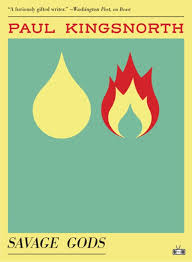
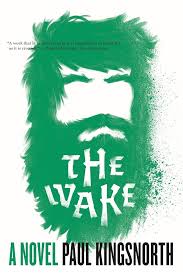
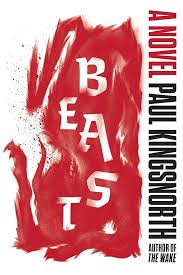
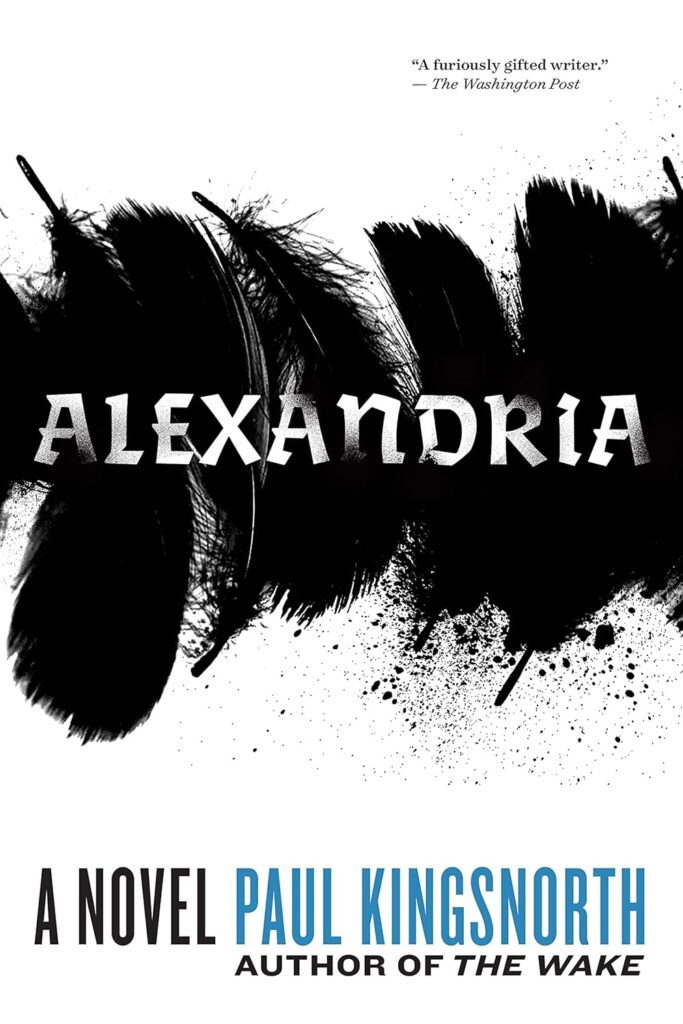
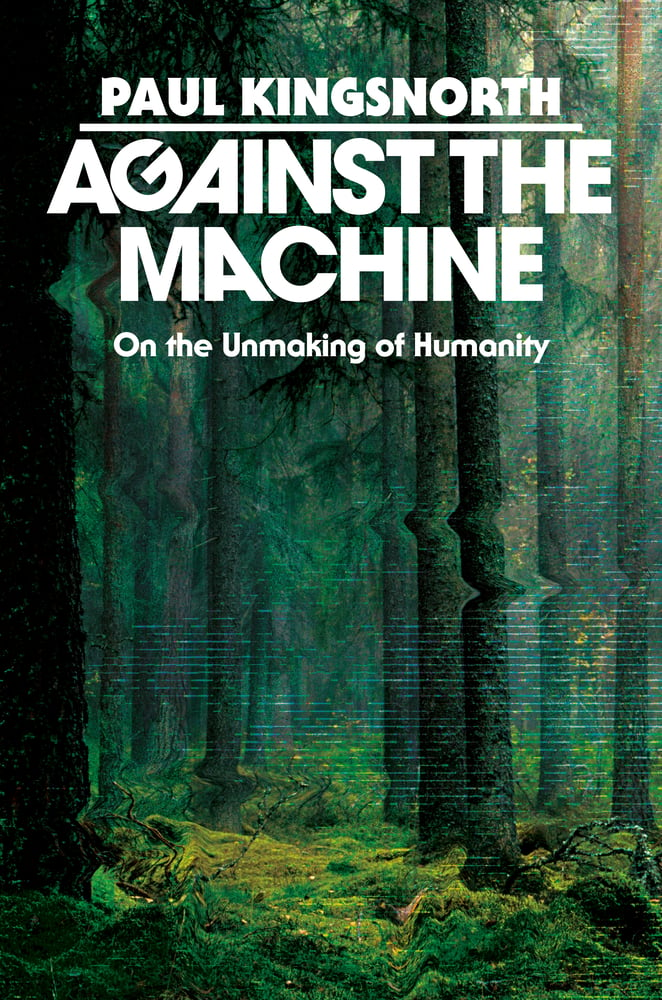
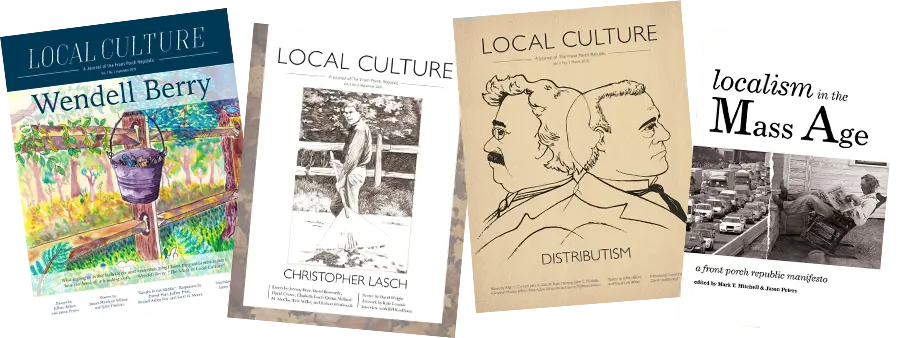



1 comment
Colin Gillette
Thank you for this piece. What struck me most is the way you frame the opposition between the Word and the machine as not only cultural, but deeply formative of how we imagine ourselves and one another. The machine tempts us toward utility, speed, and surface, while the Word insists on depth, patience, and meaning. That tension resonates with what I see in how often people are shaped by the technologies and narratives they live inside, sometimes without realizing the cost. Your essay is a needed reminder that choosing which voice to heed is not abstract but profoundly human, touching how we think, relate, and hope.